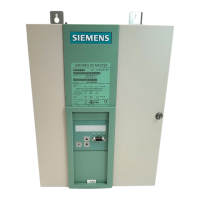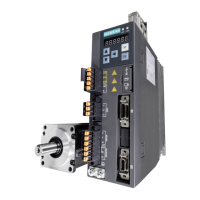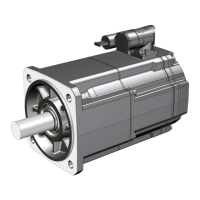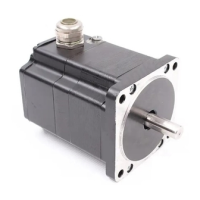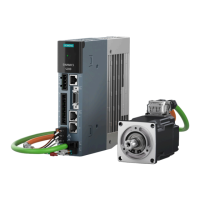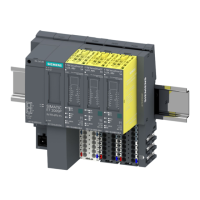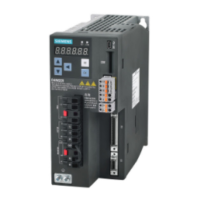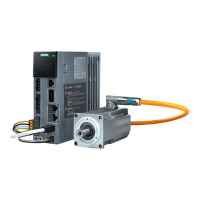02.00 Start-Up
SIEMENS AG 6RX1700-0AD76 7-33
SIMOREG DC Master Operating Instructions
7.7.4 Procedure for starting up SIMOLINK boards (SLB):
1 Disconnect the power supply and insert adapter board (ADB) containing SLB in a location.
Please remember to insert a board in location 2 before you use location 3. .
2 The SLBs must be connected up using fiber optics in such a manner as to avoid long
distances between two units (max. 40m with plastic fiber optics and max. 300 m with glass
fiber optics). Please also note that the transmitter (in centre of SLB) on one unit is connected
to the receiver (at corner of SLB) on the next unit. These connections must be made on all
units until they are linked in a closed circuit.
3 The following are important communication parameters. Index 1 of each parameter is set for
the 1
st
SIMOLINK board (1
st
SLB) and index 2 for the 2
nd
SIMOLINK board (2
nd
SLB) (the use
of a 2
nd
SLB is planned for future software versions):
- U740 Node address (address 0 identifies the dispatcher)
Node addresses must be assigned consecutively unless a SIMOLINK master is
being used.
- U741 Telegram failure time (0 = deactivated)
- U742 Transmitter power
The output of the fiber optic transmitter module can be set on each active bus
node.
- U744 Reserved for SLB selection (leave at 0 setting)
- U745 Number of channels (telegrams) used per node
The SLB with dispatcher function assigns the same number of channels to all
nodes
- U746 Traffic cycle time
In contrast to converters of the SIMOVERT series, the line-synchronous SIMOREG converter
cannot be synchronized with the cycle time of the SIMOLINK bus in order to minimum the
data interchange time.
The user data in the telegrams are exchanged cyclically (6x per mains period, i.e. every 3.3
ms at 50 HZ) between the SIMOREG converter and the SLB, irrespective of the cycle time on
the bus (U746). A shorter cycle time still means, however, that the data are transferred more
quickly after they have been made available by the converter or more up-to-date information
for the converter.
U745 and U746 together determine the number of addressable nodes (this can be checked
with diagnostic parameter n748.4 in the converter with the dispatcher board).
No. of addressable nodes =
The number of nodes serves only to check whether data can be exchanged with the values
set in U745 and U746. These parameters must otherwise be corrected.
A maximum of 201 nodes (dispatcher and 200 transceivers) can be connected to the
SIMOLINK bus. Node addresses 201 to 255 are reserved for special telegrams and others.
Consequently, with 8 channels per node, a bus cycle can be a maximum of 6.4 ms in
duration.
[]
745
1
*2
36,6
18,3746
Uus
ususU
−
+

